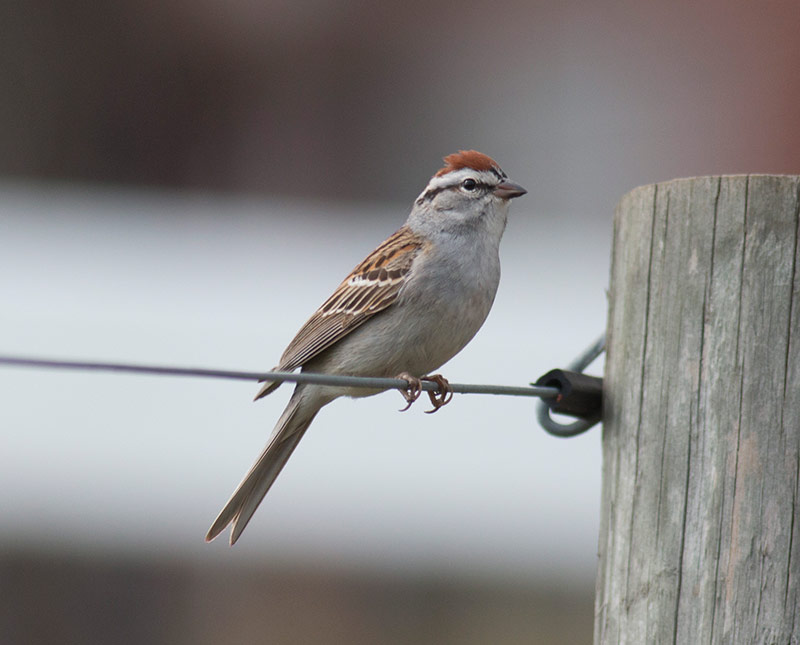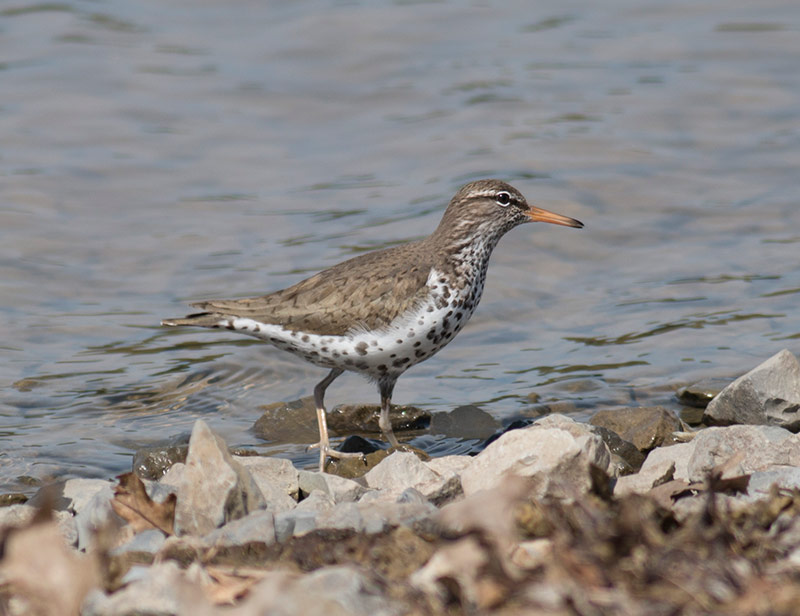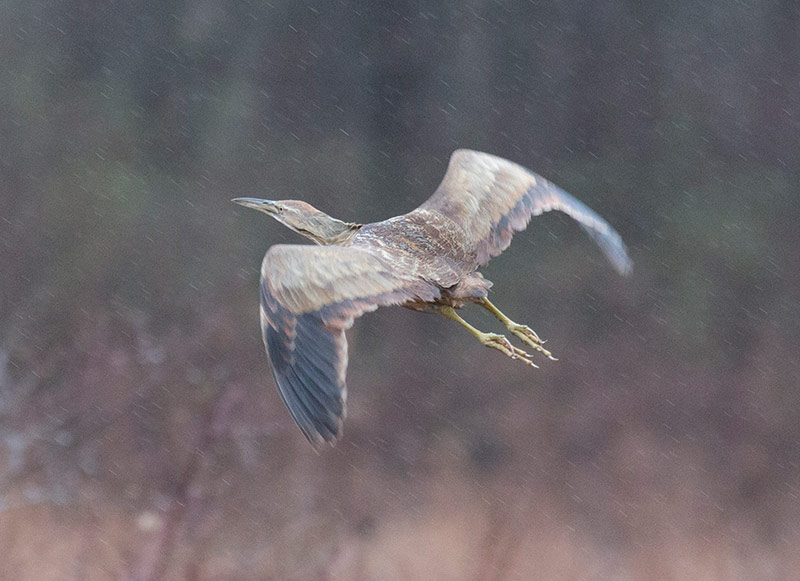April Birds
3/19/17
By David Brown
Over the next month a variety of interesting bird species will migrate through our area.
With the early thaw this year waterfowl migration is well underway but many ducks will continue migration throughout April. Head to your local lake to watch for common loons and listen to their haunting calls.
Three species of terns are common migrants though usually in small numbers. Caspian terns are the largest with a wing span of more than four feet. Forster's terns and common terns are smaller and are similar in appearance to each other.
Watch for flocks of double-crested cormorants as they sit low in the water then dive to catch fish.
Green herons arrive in mid-April and stay for the summer to nest.
Chipping sparrows return just as the last American tree sparrows leave for their breeding grounds in northern Canada.

Chipping Sparrow
Tree swallows are the first to return but are soon followed by barn swallows, northern rough-winged swallows, and purple martins.
Shorebird species such as spotted sandpipers, solitary sandpipers, and greater yellowlegs can be seen on the shores of creeks. This is the time of year you can go on a successful snipe hunt as Wilson's snipes feed in wet areas, particularly preferring very small streams in open areas and flooded farm fields.

Spotted Sandpiper
In cattail wetlands, watch for Virginia rails and American bitterns. Rusty blackbirds are one of our most rapidly declining species and can be seen in swampy areas as they migrate through on their way to Canada.

American Bittern
Ospreys are common at our local lakes and the river as they dive to catch fish.
Broad-winged hawks return from South America to nest in our expansive forests.The eastern phoebe is the first flycatcher species of the spring and is often seen bobbing its tail from a conspicuous perch.
May is the month for warblers, but a few species return in early-April. Listen for the Louisiana waterthrush as it sings three down-slurred whistles then a jumble of notes from the banks of wooded streams. Palm warblers, pine warblers and yellow-rumped warblers are also early migrants.
Red-eyed vireos rule the Pennsylvania summer but blue-headed vireos steal the show in early April as they sing their slower slurred notes from the forest.
Golden-crowned kinglets have been around all winter but will be joined by migrating ruby-crowned kinglets. These tiny birds are known for constantly moving and have high pitched calls. Blue-gray gnatcatchers are also very small but are less hyper and have a wheezy call.
Brown Thrashes perch in trees and mimic the calls of other birds in groups of twos. Even without seeing the bird this can be distinguished from the northern mockingbird which repeats each call three or more times.
Eastern towhees are large sparrows whose “drink your tea” song is easy to recognize.
Don't wait until May to get out looking for birds or you will miss some of the most spectacular migration of the year.